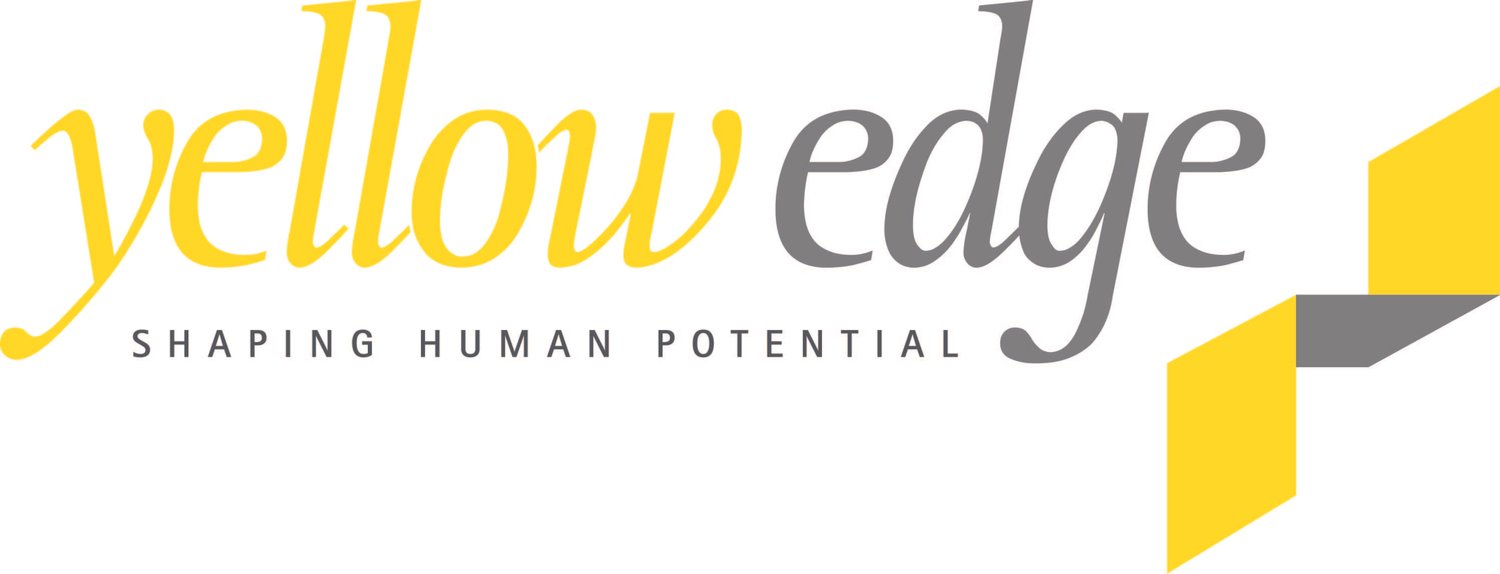63. Is Your 360 Process Helping People Thrive and Excel at Work?
by Brooke Anderson
This article highlights some unhelpful and potentially dangerous developments associated with 360-degree feedback processes and how you can ensure your 360 process is set up to have the right impact.
When feedback is given and received in the right way it can help people thrive both professionally and emotionally.
“The provision of constructive feedback in supportive, regular dialogue and conversation does much to support high performance, manage underperformance, to build trust and to demonstrate that staff and their contributions are valued” says Andrew Simon, Co-CEO of Yellow Edge.
Whilst organisations emphasise the importance of giving and receiving feedback and provide the latest tools and training to help support their staff to engage in regular, real-time feedback moments in the workplace – the reality is that feedback is often deprioritised or neglected due to our busy work agendas, our geographically dispersed teams and our perceived lack of confidence or ability to deliver feedback.
Whilst often a starting point for leadership development programs and coaching engagements, 360-degree feedback processes can also be an effective employee engagement tool to help individuals elicit feedback from multiple people at the same time in a way that can be empowering.
So, what is it about the 360-feedback process itself that can empower and help individuals to thrive and excel at work?
360-degree feedback processes can “break the ice” in feedback-poor environments.
360-degree processes can offer more balanced feedback and go some way to minimising bias and systemic error, since the feedback comes from multiple raters selected by the individual.
360-degree feedback processes keep the raters anonymous (except for the Manager) and the reports are only viewed by the individual seeking the feedback.
360-degree feedback processes include a debrief with a professional coach who can draw out the key learnings and take-aways based, clarify any misunderstandings and put things into perspective.
360-degree reports can come with a customised set of developmental recommendations, mapped to the organisation’s leadership competencies to help individuals create a personal development plan.
360s can inform learning and development opportunities without affecting performance reviews.
Despite the benefits outlined above, there are some unhelpful and, in some cases, potentially dangerous developments creeping into the 360-degree feedback process.
A lack of leadership buy-in and support for the 360-degree feedback process.
A lack of support and buy-in to the 360-degree feedback model from organisational leaders and participants can mean, at best, the 360 process is a long, drawn out and inconsequential process. At worst, it can be a process that may have negative impacts professionally and personally upon individuals due to a lack of clarity around the purpose and objectives of the 360-degree model, and poorly considered, framed and delivered feedback, as well as a lack of wrap around support.
Tying the 360-feedback process to performance review cycle.
Some organisations are not clearly differentiating between their formal performance management review and 360-degree feedback processes. Research tells us that feedback being given in the context of an assessment or review dramatically decreases its effectiveness.[i]
The purpose of the 360-degree feedback processes is to generate insights, awareness and information to help an individual to learn, improve and grow in their role. Formal performance reviews however are about assessing someone’s performance in the role.
Launching a 360-degree feedback process during a period of change or business transformation.
Asking people to provide feedback on their colleagues’ capabilities and behaviours during periods of significant change is unfair, distracting and counterproductive.
When we are under stress, we can become defensive and particularly when the organisation is in a state of flux we may not “hear” the feedback. It may be that the behavioural capabilities within the 360-degree process are not the ones being demonstrated during change period and so can be an unfairly focus on the wrong things.
A lack of attention to the psychological safety and welfare of staff.
Psychological safety is about fostering an environment where there is interpersonal trust and respect among team members, andallowing them to talk about social risks such as admitting failures and asking for help.
Now and then we notice organisations failing to adequately prepare and brief staff on the purpose and objectives of 360-degree feedback, and failing to provide external, independent and confidential support throughout the process and beyond.
The use of generic capabilities which hold little meaning or relevance or context.
Some teams and organisations are opting to populate their 360-degree surveys with generic capabilities or behaviours. Research tells us that asking the wrong questions or seeking feedback against generic capabilities can be demoralising and leave staff confused as to what behaviours are important and desired within the team.[ii]
----
In 2019, Yellow Edge undertook desktop research into performance management systems and processes. This included reviewing online publications, talking to HR Practitioners within the public and private sectors and scouring the HR blogs, and more. Based on our findings and more than fifteen years administering 360-degree processes, a successful 360 process comes down to adherence to four guiding principles:
1. Empowering and engaging stakeholders.
For best results:
Teams and organisations can host forums to discuss the purpose and objectives of 360-degree feedback, the benefits for individuals, their teams and the organisation, as well as to canvassing staff views and concerns.
HR Units can provide training and development on feedback and communication.
HR Units can develop a clear communication and engagement plan which sets out realistic timeframes and the role of managers throughout the process.
Enable participants to select their raters and reach out to them to ask for feedback.
Provide participants with follow-up support including but not limited to debriefing, ongoing coaching and career planning assistance.
2. Emphasis on development
Follow up activities including individual learning, action learning setsand coaching are just as important as the 360-degree feedback itself. In particular, 360-degree feedback followed by Individual Learning and Development Plans and ongoing coaching or mentoring can create the biggest change in behaviours.
3. Focus on a small number of key capabilities or objectives.
Feedback is most impactful when it is focuses on a small number of areas or key objectives which are describable, visible and assessable. If 360-degree feedback is bespoke, it can be based on the team or organisation’s key competencies and value-based behaviours. This ensures capabilities clearly align with the organisation’s corporate objectives.
4. Create a psychological safe and supportive environment.
For best results:
Ensure the timing is good for people – i.e., not during peak periods or business transformation.
Ample opportunity to voice concerns or challenges with engaging in the process.
Establishing clear principles or prompts for framing and delivering 360-degree feedback.
Scheduling preparatory conversations between participants and a person they trust to discuss their concerns, fears and the opportunities associated with gaining feedback.
Scheduling one-on-one debriefs with a professional coach to help unpack the feedback.
Investing time in the construction of individual development plans.
[i] Your guide to 360-degree feedback - Work Life by Atlassian
[ii] Improving Team Performance Through 360-Degree Feedback Northwestern University | School of Education & Social Policy
Published November 2023
Brooke Anderson is Head of Research, Sustainability and Social Impact at Yellow Edge, a leadership development company focused on shaping human potential.
Yellow Edge is a local, privately owned Canberra based consulting company focused on helping individuals, teams and organisations to achieve high performance. Yellow Edge is a certified BCorp. BCorp companies make decisions that make a positive impact on their employees, customers, suppliers, community, and the environment. https://www.bcorporation.com.au/


